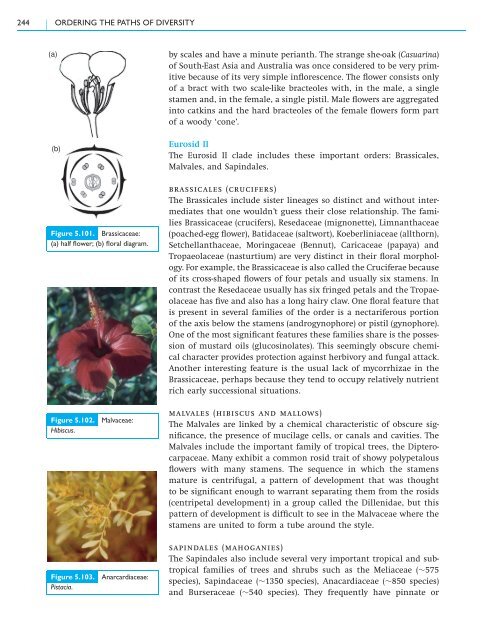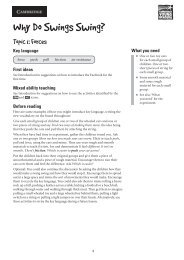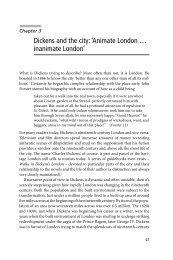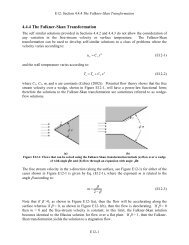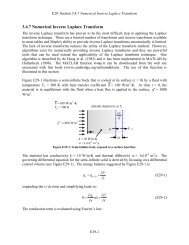5.3 Class Magnoliopsida – flowering plants - Cambridge University ...
5.3 Class Magnoliopsida – flowering plants - Cambridge University ...
5.3 Class Magnoliopsida – flowering plants - Cambridge University ...
You also want an ePaper? Increase the reach of your titles
YUMPU automatically turns print PDFs into web optimized ePapers that Google loves.
244 ORDERING THE PATHS OF DIVERSITY<br />
(a)<br />
(b)<br />
Figure 5.101. Brassicaceae:<br />
(a) half flower; (b) floral diagram.<br />
Figure 5.102. Malvaceae:<br />
Hibiscus.<br />
Figure 5.103. Anarcardiaceae:<br />
Pistacia.<br />
by scales and have a minute perianth. The strange she-oak (Casuarina)<br />
of South-East Asia and Australia was once considered to be very primitive<br />
because of its very simple inflorescence. The flower consists only<br />
of a bract with two scale-like bracteoles with, in the male, a single<br />
stamen and, in the female, a single pistil. Male flowers are aggregated<br />
into catkins and the hard bracteoles of the female flowers form part<br />
of a woody ‘cone’.<br />
Eurosid II<br />
The Eurosid II clade includes these important orders: Brassicales,<br />
Malvales, and Sapindales.<br />
brassicales (crucifers)<br />
The Brassicales include sister lineages so distinct and without intermediates<br />
that one wouldn’t guess their close relationship. The families<br />
Brassicaceae (crucifers), Resedaceae (mignonette), Limnanthaceae<br />
(poached-egg flower), Batidaceae (saltwort), Koeberliniaceae (allthorn),<br />
Setchellanthaceae, Moringaceae (Bennut), Caricaceae (papaya) and<br />
Tropaeolaceae (nasturtium) are very distinct in their floral morphology.<br />
For example, the Brassicaceae is also called the Cruciferae because<br />
of its cross-shaped flowers of four petals and usually six stamens. In<br />
contrast the Resedaceae usually has six fringed petals and the Tropaeolaceae<br />
has five and also has a long hairy claw. One floral feature that<br />
is present in several families of the order is a nectariferous portion<br />
of the axis below the stamens (androgynophore) or pistil (gynophore).<br />
One of the most significant features these families share is the possession<br />
of mustard oils (glucosinolates). This seemingly obscure chemical<br />
character provides protection against herbivory and fungal attack.<br />
Another interesting feature is the usual lack of mycorrhizae in the<br />
Brassicaceae, perhaps because they tend to occupy relatively nutrient<br />
rich early successional situations.<br />
malvales (hibiscus and mallows)<br />
The Malvales are linked by a chemical characteristic of obscure significance,<br />
the presence of mucilage cells, or canals and cavities. The<br />
Malvales include the important family of tropical trees, the Dipterocarpaceae.<br />
Many exhibit a common rosid trait of showy polypetalous<br />
flowers with many stamens. The sequence in which the stamens<br />
mature is centrifugal, a pattern of development that was thought<br />
to be significant enough to warrant separating them from the rosids<br />
(centripetal development) in a group called the Dillenidae, but this<br />
pattern of development is difficult to see in the Malvaceae where the<br />
stamens are united to form a tube around the style.<br />
sapindales (mahoganies)<br />
The Sapindales also include several very important tropical and subtropical<br />
families of trees and shrubs such as the Meliaceae (∼575<br />
species), Sapindaceae (∼1350 species), Anacardiaceae (∼850 species)<br />
and Burseraceae (∼540 species). They frequently have pinnate or


